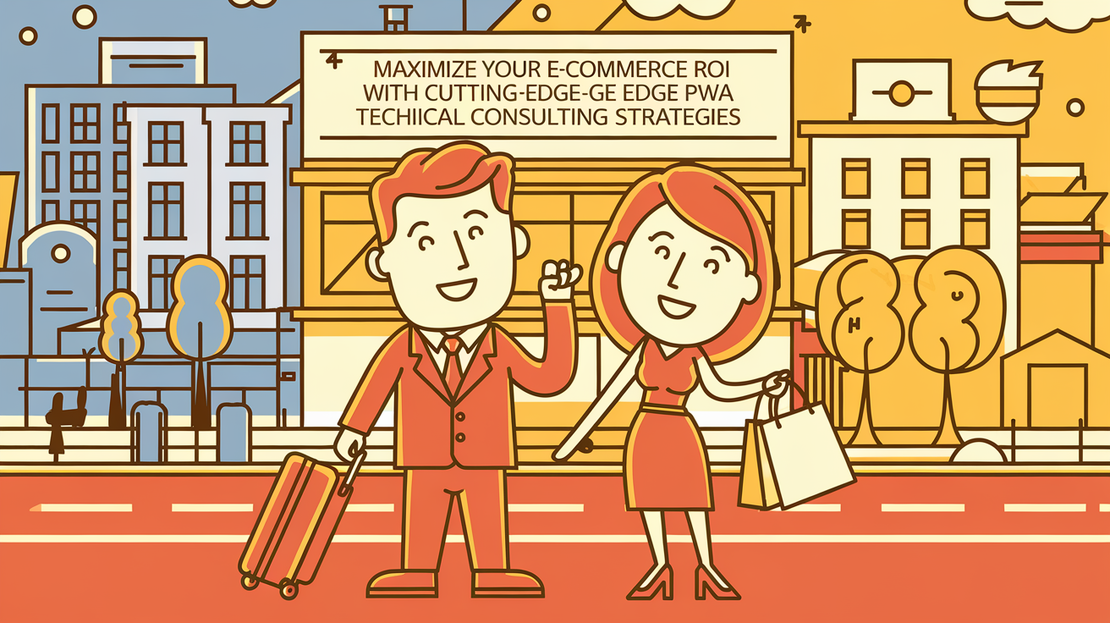
Master the E-commerce Journey: Steps for New Online Entrepreneurs
- Michal Majer
- E commerce , Online store , Strategy , Technology
- December 13, 2024
Table of Contents
Transitioning an idea into a profitable online store involves various critical steps that can determine your business’s success. This article outlines the journey from conceptualization to launching your e-commerce site. We will discuss the importance of developing a business plan, choosing the right e-commerce platform, and creating a user-friendly website. Insights into payment processing, shipping options, and marketing strategies are also crucial components that will be covered. With practical advice and actionable steps, you’ll be well-prepared to tackle the world of online retail.
Introduction to E-commerce: The Path from Idea to Profit
Navigating the e-commerce landscape can feel like a maze filled with opportunities and challenges. With so many platforms, marketing strategies, and customer preferences to think about, having a clear plan is essential.
Starting an online business can be surprisingly easy, with some entrepreneurs getting started for as little as $100. This low entry cost can make e-commerce appealing, but it’s important to remember that this initial investment is just the beginning.
Even though the financial barrier may seem low, the path to profitability can be long and requires a strategic mindset. Take, for example, a small dropshipping business that launched with a modest budget. Over time, the owner:
- Refined their product selection
- Optimized their marketing campaigns
- Built a loyal customer base
This strategic evolution turned their initial investment into a successful enterprise, highlighting the importance of patience and planning.
Success in e-commerce doesn’t happen overnight. It involves:
- Continuous learning
- Adapting to market trends
- Understanding customer needs
As you start this journey, remember that while having some starting capital is important, the real value lies in your ability to strategize effectively and adapt to the ever-changing online marketplace.
Crafting Your Business Plan: The Blueprint for E-commerce Success
To build a strong foundation for your e-commerce business, it’s essential to do thorough market research. This step helps you discover emerging trends and understand what customers really want. For example, if you find a rising interest in sustainable products, adding eco-friendly options to your inventory can set you apart from the competition.
Defining your target audience is just as important. By analyzing demographics and shopping habits, you can create marketing strategies that truly resonate. Consider factors like:
- Age
- Income
- Shopping habits
If you determine that your ideal customer is a 30-something professional with disposable income, you can tailor your messaging to highlight convenience and quality, which can boost engagement and conversion rates.
These insights not only build trust but also help you make informed decisions, enabling you to navigate the e-commerce landscape with confidence and clarity.
Selecting the Right E-commerce Platform and Designing for Success
Choosing the right e-commerce platform is a crucial first step for your online business.
When evaluating your options, consider features that can elevate the shopping experience, like:
- 360-degree product photography, which can boost conversion rates by up to 13%
- Immersive visuals that let customers explore products in detail, replicating the in-store experience
A strong visual presentation can turn a casual browser into a committed buyer, especially in areas like fashion and electronics.
Alongside visual enhancements, having a user-friendly interface is vital. With more inexperienced online shoppers entering the market—projected to increase purchases by 160%—making your site easy to navigate is key. A streamlined design that reduces friction, such as:
- Simple checkout processes
- Clear product categories
can help convert hesitant visitors into loyal customers. For instance, a retailer that improved their website layout with prominent search features and straightforward navigation noticed a significant boost in repeat sales.
Bringing these elements together not only enhances the shopping journey but also lays the groundwork for long-term success, allowing you to adapt to changing customer expectations and preferences.
Mastering Logistics and Marketing for E-commerce Success
In the competitive world of e-commerce, getting logistics and marketing right is key to achieving success.
One smart approach is to provide a variety of payment options at checkout. By catering to different preferences—such as credit cards, digital wallets, and other methods—businesses can boost their checkout conversion rates significantly. For example, a retailer that added PayPal experienced a 25% increase in completed transactions, showing how offering flexible payment choices can enhance customer satisfaction and drive sales.
Another crucial tactic is leveraging pay-per-click (PPC) advertising. With a remarkable return on investment of $11 for every $1 spent, PPC is vital for attracting traffic to your site. Targeted ad campaigns can:
- Bring in new customers
- Retarget those who have previously shown interest
A brand that focused on strategic PPC ads for a seasonal sale saw a 40% increase in web traffic, highlighting the powerful impact of smart marketing on revenue growth.
By incorporating these strategies into your business model, you can create an engaging shopping experience that draws in and keeps customers, laying a solid foundation for sustained e-commerce success.
Summary
Embarking on an e-commerce venture is both exciting and challenging, with a landscape rich in potential yet fraught with competition. The article underscores that while the initial investment can be minimal, the journey to profitability hinges on strategic planning and adaptability. Key takeaways include the necessity of thorough market research to identify customer preferences and emerging trends, such as the rising demand for sustainable products.
Moreover, understanding your target audience is critical; tailoring marketing efforts based on demographics can significantly enhance engagement. The choice of an e-commerce platform should prioritize user experience, incorporating features like 360-degree product views to boost conversion rates.
Finally, optimizing logistics and marketing strategies—like offering diverse payment options and leveraging PPC advertising—can dramatically increase customer satisfaction and sales. As you reflect on these insights, consider how you can innovate within your own strategies to not only meet but anticipate customer needs in this dynamic marketplace.
Sources used in the article
- https://www.bigcommerce.com/articles/ecommerce/create-online-store/
- https://www.shopify.com/blog/ecommerce-business-blueprint
- https://www.bigcommerce.com/blog/ecommerce-payment-processing/
- https://www.shopify.com/blog/ecommerce-marketing


